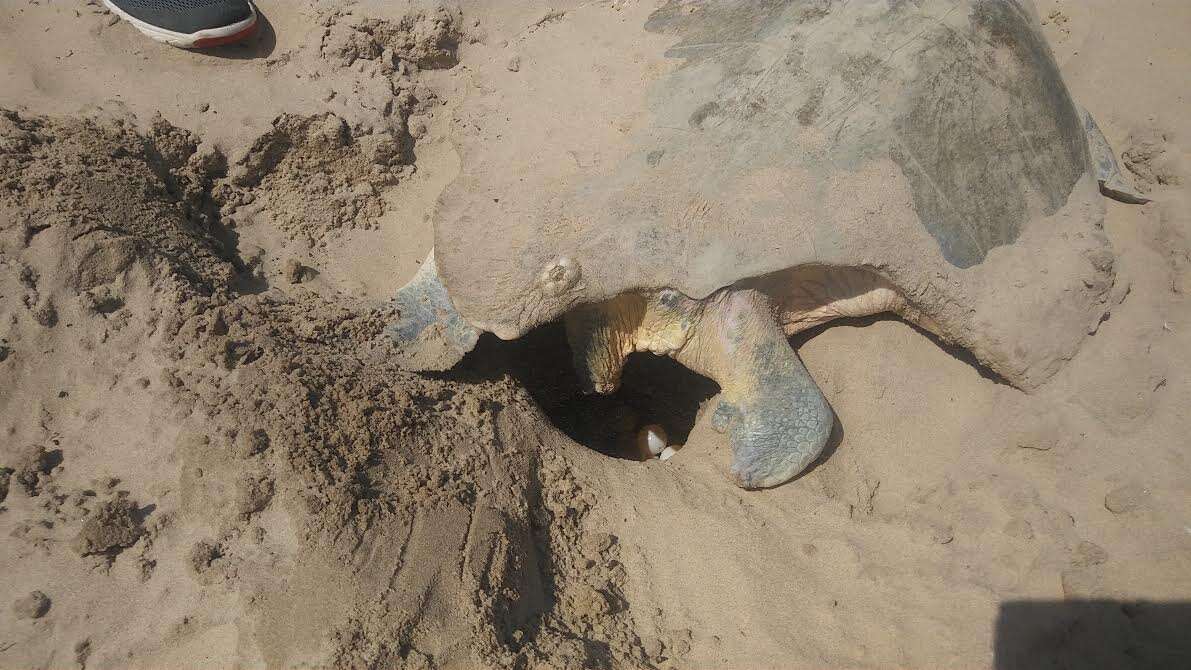Two days ago, Jeff George, executive director of Sea Turtle, Inc., got a phone call. Someone on a beach on South Padre Island in Texas had spotted a distinctive-looking sea turtle with a large chunk missing from her shell.
George knew this turtle. A little over a month ago, she’d crawled onto the same beach, dug a nest and laid 85 eggs. An intern had snapped a single photo of her, but before she could get another one, the animal disappeared back into the ocean.

But now the turtle was back with a purpose — to dig another nest and lay more eggs.
While no one exactly knows what happened to this turtle, she was probably attacked by a predator.
“Turtles are very small when they’re born, so this could have been a fish early on in her life, or it could have been a shark later on,” George said.

“She seems to limp,” George said. “If a sea turtle can limp while they’re crawling, she certainly gave that appearance. She kind of walked sideways.”
But nothing was going to stop this mama turtle from doing what she needed to do — this time, she laid 62 eggs.

For George, seeing this turtle lay eggs was particularly uplifting — not only because of the turtle’s injury, but also because she was a Kemp’s ridley sea turtle, which is the rarest species of sea turtle and is critically endangered. The main reason these turtles are endangered is because of the loss and destruction of their nesting grounds — they also get caught in fishing gear like nets and longlines.

“She chose a rather poor spot to lay her eggs, where the sand was quite hard, and so I made the call to help,” he said. “As she tried to dig with the short stub [of her flipper], I reached in and dug for her.”
While the turtle won’t be around to see her babies hatch, George and his team will do everything they can to make sure the eggs are well taken care of. After the mother laid her eggs, the team moved them to a protected hatchery to ensure they make it to the ocean.

“The first nest is usually a hundred or more, so this was most likely a third nest for this mama,” he said. “Or it could be that because of the predator attack that her reproductive system is smaller, and that this is the maximum amount that she can generate.”

And after her body recuperates, she’ll be ready to nest again in a couple of years, George said.
“Sea turtles have an incredible ability to survive and continue to do their instinctive things like laying eggs,” George said. “She is a testimony to the survival of the species, and how hearty sea turtles are.”